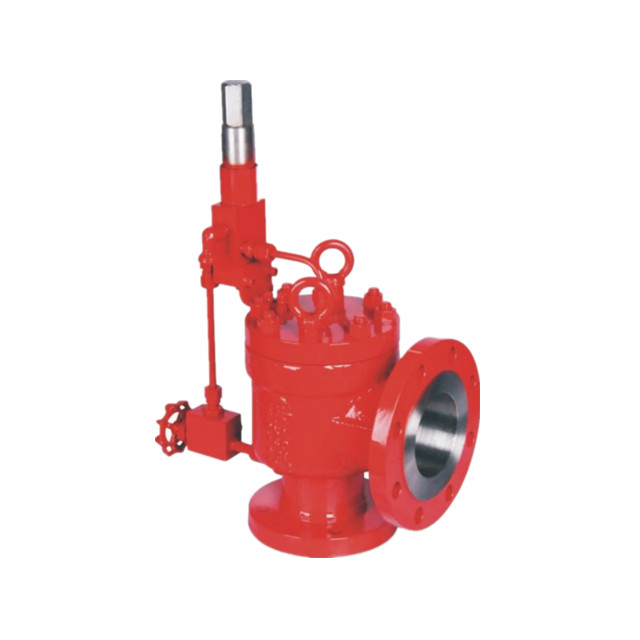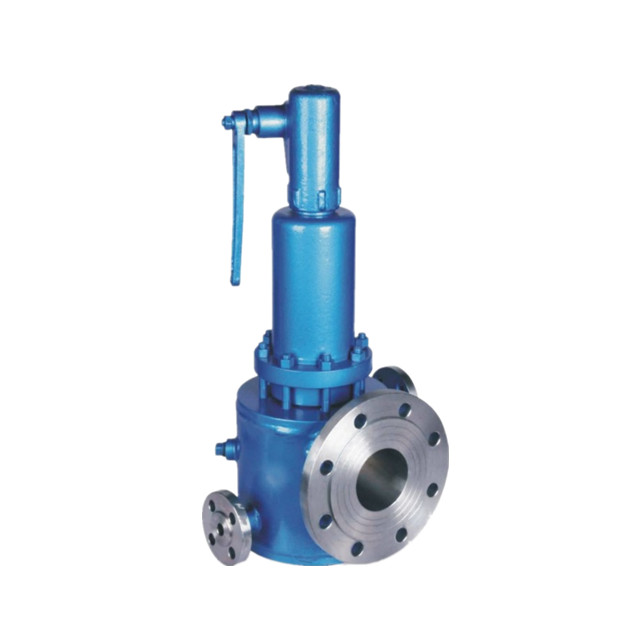สารบัญ
สลับRelief valves and safety valves are both important for preventing system failures, but they differ in design and function. Learn about the key differences between the two in this comprehensive guide.
เมื่อความดันภายในระบบอัดความดันเพิ่มขึ้น ความดันในวาล์วระบายจะเพิ่มขึ้น และวาล์วนิรภัยหรือวาล์วควบคุมจะเปิดขึ้น แม้ว่าทั้งสองจะมีประโยชน์ในการป้องกันความล้มเหลวของระบบ แต่ก็มีความแตกต่างกันในด้านการออกแบบและการทำงาน วาล์วระบายได้รับการออกแบบมาเพื่อลดแรงดันตามสัดส่วนของแรงดันที่เพิ่มขึ้นเหนือแรงดันเปิด และโดยทั่วไปจะใช้ในระบบที่มีของไหลอัดได้ การใช้วาล์วระบายในระบบเพื่อความปลอดภัยหรือเพื่อวัตถุประสงค์ฉุกเฉินนั้นขึ้นอยู่กับประเภทของแรงดันและการทำงานของระบบ
ในขณะที่ วาล์วนิรภัย ปกป้องอุปกรณ์และมีรีลีฟวาล์วระบายแรงดันทั้งสองแบบไม่เหมือนกัน วาล์วนิรภัยจะเปิดเมื่อความดันสูงกว่าค่าที่ตั้งไว้สามเปอร์เซ็นต์ ในขณะที่วาล์วระบายจะเปิดเมื่อความดันสูงขึ้น 10 เปอร์เซ็นต์ ค่าเซ็ตพอยต์ของวาล์วนิรภัยมักเรียกว่าแรงดันใช้งาน ในขณะที่วาล์วระบายโดยทั่วไปจะตั้งค่าสูงกว่า 10 เปอร์เซ็นต์
รีลีฟวาล์วคืออะไร?
รีลีฟวาล์วทำจากวัสดุหลายชนิด ขึ้นอยู่กับวัตถุประสงค์การใช้งาน เหล็กกล้าไร้สนิม และใช้เหล็กกล้าคาร์บอนในการทำ สปริงภายใน. ทองเหลืองเป็นตัวเลือกที่คุ้มค่าที่สุด ในขณะที่พลาสติกและอลูมิเนียมมักใช้เพื่อลดน้ำหนักและต้นทุน วาล์วระบายเหล็กสแตนเลสใช้ในการใช้งานที่เกี่ยวข้องกับของเหลวที่มีฤทธิ์กัดกร่อน
แม้ว่าคุณอาจไม่ทราบถึงการใช้งานวาล์วระบายที่หลากหลาย แต่คุณน่าจะเคยพบการใช้งานวาล์วระบายดังกล่าวในสภาพแวดล้อมที่ไวต่อแรงกด วาล์วเหล่านี้ควบคุมการไหลของก๊าซหรือของเหลวที่มีแรงดันเพื่อป้องกันการสะสมที่เป็นอันตราย เมื่อใดก็ตามที่ใช้งาน พวกมันมีความสำคัญต่อการควบคุมแรงดันในภาชนะรับแรงดัน พวกเขายังทำให้สิ่งต่าง ๆ ทำงานได้อย่างราบรื่น สิ่งสำคัญคือต้องจำไว้ว่าวาล์วเหล่านี้มีความสำคัญอย่างยิ่งต่อการป้องกันความเสียหายต่ออุปกรณ์
Types of Relief Valve
Direct Spring-Loaded Relief Valve
Direct spring-loaded relief valves are common in various industries.
They utilize a spring force to keep the valve closed, and when the system pressure exceeds the set point, the valve opens, releasing excess pressure.
These valves are known for their simplicity, reliability, and ease of maintenance.
Pilot-Operated Relief Valve
Pilot-operated relief valves use a pilot valve and a main valve to control system pressure.
The pilot valve monitors pressure and, when it exceeds the set point, opens, allowing the main valve to relieve pressure.
These valves are suitable for applications with fluctuating pressures and provide precise control.
Balanced Relief Valve
Balanced relief valves handle high pressures efficiently by incorporating a balanced bellows or similar mechanism to counteract system pressure.
This design ensures accurate pressure control and is commonly used in applications requiring consistent pressure relief.
Pressure Vacuum Relief Valve
Pressure vacuum relief valves maintain balanced pressure in a system, protecting tanks or vessels from excessive pressure or vacuum conditions.
These valves open to relieve pressure or allow air into the system, preventing vacuum conditions and ensuring container integrity.
Power-Operated Relief Valve
Power-operated relief valves use an external power source, such as an electric motor or hydraulic system, for precise and automated pressure relief.
They are suitable for applications requiring advanced control, where manual operation is impractical.
Understanding the characteristics and applications of each type is crucial for selecting the most appropriate relief valve, ensuring safety and operational efficiency.
Pros and Cons of Relief Valves
ข้อดี
Pressure Regulation
Relief valves effectively regulate pressure, ensuring safe system operation within specified limits.
Safety Assurance
They prevent overpressure scenarios, safeguarding equipment, pipelines, and vessels from potential damage.
ความเก่งกาจ
Relief valves come in various types, offering versatility to meet specific requirements in different applications and industries.
Ease of Maintenance
Certain types, like direct spring-loaded valves, are simple to install and maintain.
Continuous Monitoring
Pilot-operated valves provide continuous pressure monitoring, making real-time adjustments for optimal pressure levels.
Balanced Design
Balanced relief valves offer accurate and stable pressure control in high-pressure systems.
Prevents Vacuum Conditions
Pressure vacuum relief valves protect against excessive pressure and prevent vacuum conditions in containers, ensuring structural integrity.
Power Operation
Power-operated relief valves provide precise and automated control for advanced pressure management.
ข้อเสีย
Initial Cost
High-quality relief valves, especially advanced ones, may have a higher initial cost.
Maintenance Complexity
Some valves with complex designs may require intricate maintenance procedures, potentially increasing downtime.
Limited Accuracy
Achieving extremely precise pressure control can be challenging in certain situations.
Space Requirements
Power-operated valves may require additional space for power sources and control mechanisms.
Dependency on External Power
Power-operated valves depend on an external power source, limiting use during power failures or in remote locations.
Potential for Leakage
Minor leakage may occur in some relief valves, which can be a concern in specific applications.
Application Specificity
Choosing the right relief valve requires careful consideration of the application to avoid inadequate pressure relief.
Understanding both the advantages and drawbacks of relief valves is essential for making informed decisions when selecting the most suitable valve for a particular system or process.
วาล์วนิรภัยคืออะไร?
หากคุณอยู่ในตลาดสำหรับวาล์วนิรภัยตัวใหม่ คุณอาจมีคำถามสองสามข้ออยู่ในใจ ประการแรก วาล์วนิรภัยคืออะไร? แล้วทำไมคุณถึงต้องสนใจพวกเขาด้วยล่ะ? ลองหากัน วาล์วนิรภัยเป็นส่วนประกอบที่สำคัญของระบบแก๊สและของเหลวทุกชนิด ช่วยป้องกันอุบัติเหตุและปกป้องทรัพย์สินของคุณจากความเสียหาย บทความนี้จะอธิบายว่าเหตุใดวาล์วนิรภัยจึงมีความสำคัญ ลองมาดูกันดีกว่า
วาล์วนิรภัยสามารถจำแนกได้เป็น สามประเภท: ออกฤทธิ์โดยตรง, ออกฤทธิ์โดยอ้อมและมัลติฟังก์ชั่น วาล์วนิรภัยแบบออกฤทธิ์โดยตรงเป็นประเภทที่พบบ่อยที่สุด พวกเขา ที่ใช้กันทั่วไปใน การใช้งานที่มีแรงดันต่ำและไม่เป็นอันตราย วาล์วที่ออกฤทธิ์ทางอ้อมไม่ได้ผ่านการทดสอบตามมาตรฐาน ASME พวกมันยังถือว่าเป็นวาล์วที่ไม่ใช่โค้ดอีกด้วย แม้จะมีชื่อ แต่วาล์วนิรภัยไม่ได้รับการรับรองจาก ASME หน้าที่หลักของวาล์วนิรภัยคือการปกป้องคุณและคนงานของคุณ
วาล์วนิรภัยอีกประเภทหนึ่งคือวาล์วระบาย ป้องกันการไหลของของไหลที่จะทำให้ท่อแตกได้ ติดตั้งอยู่ในท่อตัน ซึ่งอาจสร้างปัญหาได้ เช่น ในหม้อต้มไอน้ำ ปิดโดยอัตโนมัติเมื่อถูกเรียก ป้องกันไม่ให้วัสดุเข้าสู่ระบบ อย่างไรก็ตาม หากมีปัญหาเกิดขึ้นในบริเวณเชื่อมต่อ วาล์วนิรภัยจะเปิดขึ้น เพื่อป้องกันการไหลของก๊าซหรือของเหลว
Types of Safety Valves
Spring-Loaded Safety Valves
Spring-loaded safety valves are one of the most common types, featuring a spring mechanism that exerts force on the valve disc to keep it closed.
When the system pressure exceeds the set limit, the spring force is overcome, causing the valve to open and release excess pressure.
These valves are widely used for various applications, including steam boilers and pressure vessels.
Pilot-Operated Safety Valves
Pilot-operated safety valves utilize a two-step process for pressure relief.
A smaller pilot valve controls the larger main valve.
When system pressure surpasses the set limit, the pilot valve opens, causing a pressure drop that triggers the main valve to open fully.
These valves are suitable for high-pressure systems and offer precise control.
Lever Safety Valves
Lever safety valves employ a lever mechanism for pressure relief.
The lever is attached to the valve disc, and when the force exerted by the system pressure overcomes the counteracting force of the lever, the valve opens.
These valves are commonly used in low-pressure applications, and the set pressure can be adjusted by changing the position of the weight on the lever.
Diaphragm Safety Valves
Diaphragm safety valves use a flexible diaphragm to control the valve opening.
When pressure exceeds the set limit, the diaphragm flexes, allowing the valve to open and release pressure.
These valves are suitable for applications where a soft-seated valve is required to prevent damage to the seating surfaces.
Balanced Safety Valves
Balanced safety valves are designed to minimize the effect of back pressure on the valve’s performance.
They feature additional components that balance the pressure on both sides of the valve, ensuring accurate pressure relief even in situations with varying back pressure.
These valves are commonly used in processes with fluctuating pressure conditions.
Dome-Loaded Safety Valves
Dome-loaded safety valves utilize a dome-shaped chamber filled with system pressure to keep the valve closed.
When the pressure exceeds the set limit, the dome pressure is overcome, allowing the valve to open and release pressure.
These valves are known for their rapid response and are suitable for high-pressure applications.
Understanding the characteristics and applications of different safety valve types is crucial for selecting the most appropriate valve for specific industrial processes and ensuring the safety of pressure vessels and systems.
Pros and Cons of Safety Valves
Pros of Safety Valves
Reliable Pressure Relief: Safety valves provide a reliable means of relieving excess pressure in a system, preventing potential catastrophic failures due to overpressure.
ความเก่งกาจ: Safety valves are versatile and can be used in various applications, from steam boilers and pressure vessels to industrial processes, ensuring protection across different scenarios.
Adjustability: Many safety valves allow for the adjustment of the set pressure, providing flexibility to meet the specific pressure relief requirements of different systems.
Rapid Response: Safety valves, especially dome-loaded and spring-loaded types, can respond quickly to changes in pressure, ensuring timely relief and preventing damage to equipment.
Wide Range of Types: The diverse types of safety valves cater to different pressure ranges, applications, and environmental conditions, allowing for customized solutions based on specific needs.
Cons of Safety Valves
ข้อกำหนดการบำรุงรักษา: Safety valves need regular maintenance to ensure proper functioning.
Over time, deposits, corrosion, or wear can affect the valve’s performance, necessitating periodic inspections and repairs.
Limited Precision: Some safety valves may have limitations in precision when it comes to pressure settings.
Achieving extremely precise pressure relief may require more sophisticated and potentially expensive valve types.
Risk of Leakage: In certain situations, safety valves may experience leakage, especially during their initial opening or closing stages. This can lead to a gradual loss of system pressure.
Complexity in Pilot-Operated Valves: Pilot-operated safety valves, while offering precise control, can be more complex in design and installation, requiring careful setup and maintenance.
Initial Cost: Depending on the type and features, safety valves may have higher initial costs compared to simpler pressure relief devices.
However, this cost is often justified by the level of protection they provide.
รีลีฟวาล์วและเซฟตี้วาล์วต่างกันอย่างไร?
มีความแตกต่างที่สำคัญอย่างหนึ่งระหว่างวาล์วนิรภัยและวาล์วควบคุมการไหล วาล์วควบคุมการไหลระบายจะเปิดเฉพาะเมื่อแรงดันต่ำกว่าค่าที่ตั้งไว้ ซึ่งโดยทั่วไปต่ำกว่าระดับแรงดันการทำงานของระบบ จุดที่กำหนดถูกกำหนดโดยวัสดุและการทำงานของระบบ ในกรณีส่วนใหญ่ วาล์วนิรภัยจะเปิดเล็กน้อยก่อนที่จะถึงจุดที่ตั้งไว้ ในขณะที่วาล์วควบคุมการไหลระบายจะเปิดก็ต่อเมื่อแรงดันมากกว่าค่าที่ตั้งไว้
รีลีฟวาล์วคืออุปกรณ์ที่ค่อยๆ ปล่อยแรงดันออกจากระบบ โดยจะเปิดตามสัดส่วนของแรงดันที่เพิ่มขึ้นแล้วปิดอีกครั้ง ใช้สำหรับระบบที่อยู่ภายใต้ความกดดันเพื่อป้องกันไม่ให้ระบบระเบิดหรือระเบิด วาล์วควบคุมการไหลเพื่อความปลอดภัยมีไว้เพื่อป้องกันไม่ให้ระบบระเบิด ซึ่งเป็นสถานการณ์ที่อันตราย เซฟตี้วาล์วสามารถ ยังสามารถนำมาใช้ ในกระบวนการที่เกี่ยวข้องกับของเหลว เช่น เครื่องยนต์ของรถยนต์
วาล์วนิรภัยแรงดันจะเปิดเมื่อแรงดันภายในระบบถึงระดับที่กำหนดไว้ เมื่อความดันในระบบสูงเกินความดันที่ตั้งไว้ วาล์วจะเปิดขึ้น และของเหลวที่หลบหนีจะลดความดันลง เมื่อความดันลดลง แผ่นดิสก์จะปิดและปิดผนึกอุปกรณ์
About Xintai: Your Trusted Valve Manufacturer
Founded in 1998, กลุ่มวาล์ว XINTAI is a leading valve manufacturer seamlessly integrating R&D, casting, production, and sales.
Located in Wenzhou’s Longwan Konggang New District, the group operates from four bases with eight advanced casting lines in a 32,000 sqm workshop.
With annual production exceeding 270,000 valves, XINTAI has been a major player in Wenzhou’s casting valve industry since 1998.
ISO9001, CE, OHSAS18001, and API certifications reflect their commitment to quality.
Specializing in high-pressure systems, XINTAI offers a range of valves, from control to hydraulic, establishing itself globally with three offices and trusted custom valve solutions.












